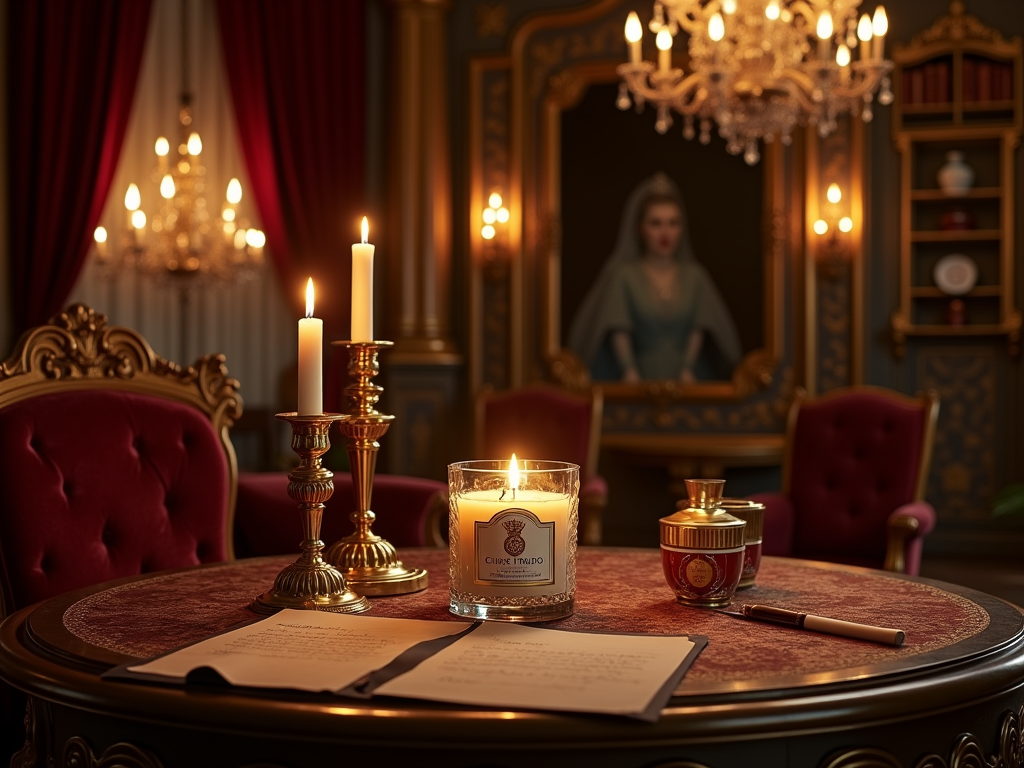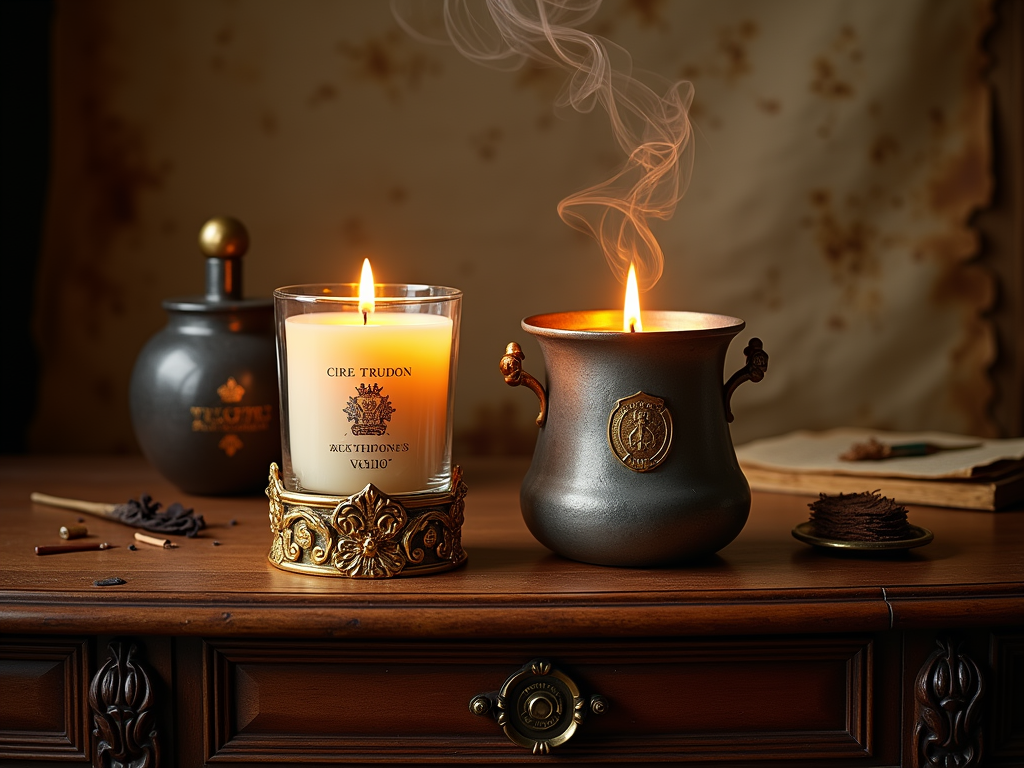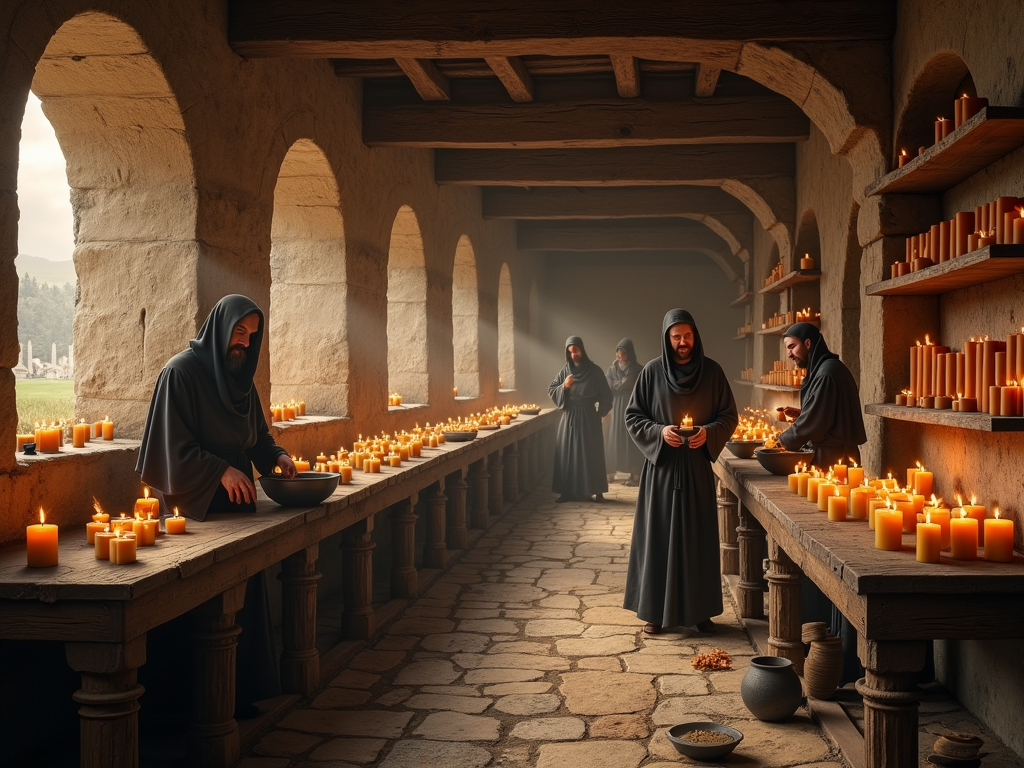
Key Takeaways
- Cire Trudon started as a small grocery store in Paris before earning the title of Royal Wax Manufacturer in 1719.
- The company lit the homes of elite clients including Louis XIV and Napoleon Bonaparte.
- Cire Trudon carries on historic production techniques while meeting current market demands.
- Rathbornes states an earlier founding date (1488) but cannot verify uninterrupted operations.
- Both historic brands shifted from basic lighting to premium home fragrances while honoring their origins.
The World’s Most Historic Candle Maker: Meet Cire Trudon
From Humble Origins to Royal Recognition
Long before ancient civilizations crafted their first candles, Claude Trudon opened a small grocery store in Paris in 1643 that would eventually become the world’s oldest operating candle manufacturer. The store initially sold candles as just one of many products, but Trudon’s dedication to creating superior wax blends quickly captured attention.
His craftsmanship caught the eye of French nobility, leading to a prestigious appointment as the Royal Wax Manufacturer in 1719. This recognition propelled Cire Trudon into the highest echelons of French society. The company’s reputation grew as they supplied candles to the lavish court of Louis XIV, whose grand halls at Versailles glowed with Trudon’s creations. Later, Napoleon Bonaparte himself chose Trudon candles for his private chambers.
Setting the Standard for Excellence
I’ve found that what sets Cire Trudon apart is their unwavering commitment to traditional manufacturing methods paired with historical candle-making techniques. Their master chandlers still practice time-honored methods that have been passed down through generations. Each candle represents centuries of expertise in:
- Wax selection and blending for optimal burning
- Hand-pouring techniques that ensure even distribution
- Custom wick placement for clean, sustained flames
- Precise fragrance incorporation that doesn’t compromise burn quality
Today, Cire Trudon continues to symbolize luxury and craftsmanship in candle making. While their methods have stayed true to tradition, they’ve adapted to modern preferences by introducing contemporary fragrances and designs. Their signature glass vessels, adorned with the royal seal, serve as a reminder of their historic legacy while meeting current luxury market demands.
The company’s persistence through various political upheavals, including the French Revolution and two World Wars, showcases their resilience. They’ve maintained their position at the forefront of luxury candle making by staying true to their founding principles of quality and craftsmanship, while carefully evolving their product line to stay relevant in each new era.
The Rathbornes Story: A Tale of Ireland’s Oldest Company
In 1488, as candle making began evolving from basic craft to commercial enterprise, John G. Rathborne established what would become Ireland’s oldest candle company in Dublin. This venture started by crafting essential lighting solutions for churches and public spaces throughout the city.
From Church Lights to Luxury Brand
The journey of Rathbornes reflects the fascinating spiritual significance of candles through history. Their initial focus on providing church candles helped establish their reputation for quality craftsmanship. While they claim the title of oldest candle company, it’s important to note that this distinction differs from being the oldest continuous manufacturer.
The company’s path hasn’t been without its challenges. Over the centuries, Rathbornes has experienced multiple ownership changes and periods of reduced activity. These transitions mirror the broader symbolic evolution of candles from necessity to luxury items.
Today’s Rathbornes has transformed into a luxury brand, specializing in scented candles that blend traditional craftsmanship with modern fragrances. I’ve noticed they maintain strong ties to their heritage while adapting to current market demands. Their product line includes:
- Hand-poured luxury scented candles
- Traditional church candles maintaining historical connections
- Limited edition collections that honor Irish heritage
- Bespoke fragrances developed by master perfumers
The debate about continuous operation through the centuries adds an intriguing layer to their story. While some historical records show gaps in production, the brand’s legacy remains deeply rooted in Irish history. This rich heritage, combined with their current focus on luxury products, positions them uniquely in today’s market.
A Tale of Two Historic Brands: Comparing the Legacy Claims
The French Pioneer: Cire Trudon’s Verified Legacy
The story of candle making history takes an interesting turn with Cire Trudon, which holds the distinction of being the oldest continuously operating candle manufacturer in the world. Founded in 1643, this French house has maintained uninterrupted production records since its establishment. I’ve found that their legacy is deeply tied to French royalty – they supplied candles to the court of Louis XIV and continued through the reign of Louis XVI.
The company’s transformation from a royal supplier to a modern luxury brand hasn’t diminished its commitment to traditional craftsmanship. Their current collection still uses many of the original manufacturing techniques, though they’ve adapted to modern safety standards and sustainable practices. Each candle tells part of the brand’s rich heritage through historical and spiritual connections reflected in their scent stories and designs.
Rathbornes: The Irish Contender
While Rathbornes claims an earlier founding date of 1488, making it the oldest candle company in the world, its continuous operation status is less clearly documented. This Irish candlemaker represents centuries of candle-making tradition and has played a crucial role in Ireland’s lighting history.
I believe it’s important to understand the key differences that affect these historic claims. Here are the factors that influence how we classify these heritage brands:
- Manufacturing Continuity: Cire Trudon has documented proof of uninterrupted production since 1643
- Company Registration: Rathbornes’ earlier founding date of 1488 lacks complete operational records
- Historical Role: Both brands served significant institutional customers – Cire Trudon for French royalty, Rathbornes for Irish lighthouses
- Product Evolution: Both have shifted from utilitarian lighting to luxury home fragrances
- Market Position: Currently, both operate in the premium segment with heritage-inspired collections
Today, both brands capitalize on their historical significance while offering modern luxury products. Their stories remind me that in the candle industry, age alone isn’t the only measure of prestige – it’s the combination of heritage, craftsmanship, and ability to stay relevant that truly sets these brands apart.

Ancient Roots: The Early Days of Commercial Candle Making
The practice of making candles dates back over 5,000 years, with early civilizations crafting light sources from available materials. These primitive candles played vital roles in daily life, religious ceremonies, and spiritual practices across ancient cultures.
From Home Craft to Commercial Enterprise
Early candle production relied on locally sourced materials, with tallow (animal fat) being the most common. I can tell you that home-based candlemaking dominated the industry until the Middle Ages, with families creating their own supplies for personal use. The symbolic significance of candles in religious ceremonies sparked the first commercial production efforts, primarily in monasteries and religious institutions.
The transition to commercial manufacturing brought significant changes to production methods and materials. Here’s how the industry transformed:
- Tallow gave way to beeswax in premium candles, offering cleaner burns and pleasant scents
- Mechanization in the 1800s replaced hand-dipping methods
- Continuous pouring machines increased production capacity
- Paraffin wax introduction in the 1850s made candles more affordable
- Quality control standards emerged with commercial production
The Industrial Revolution marked a turning point for candle manufacturing. Steam-powered machinery and new manufacturing processes allowed for mass production, though no single brand can claim to be the absolute oldest. Price’s Patent Candles, established in 1830, stands as one of the earliest documented commercial candle brands still in operation. The company pioneered scientific approaches to candle-making and introduced innovative production methods.
By the late 1800s, several major candle manufacturers had established themselves across Europe and America. These companies refined their techniques and developed signature products, setting standards for quality and innovation that still influence modern candle-making.

Sources:
Cire Trudon – Official Website
Rathbornes 1488 – Official Website
The Irish Times – “Rathbornes: Claiming the Title of the World’s Oldest Candle Company”
National Candle Association – “History of Candles”
